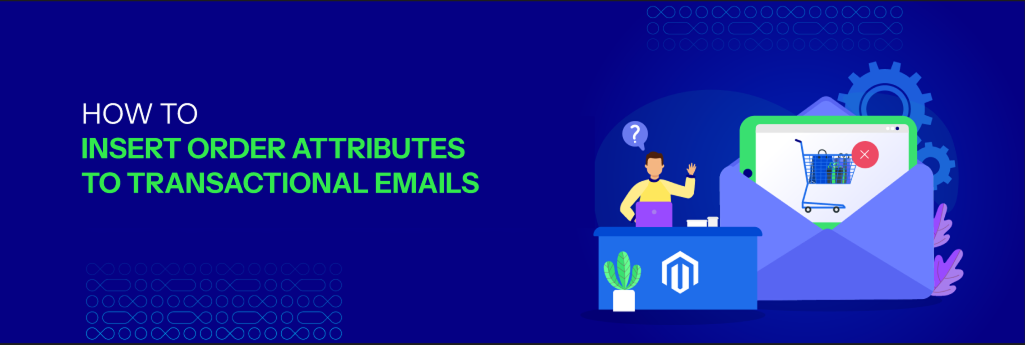How To Configure Argentina Localization In Odoo

With a big catalog of 224+ extensions for your online store
The accounting management module of the Odoo platform is comprehensive and efficient, which greatly assists the firm in improving its inefficient methods of financial management. In addition, the Odoo Accounting module will serve as a comprehensive and effective solution for financial administration, as it will include specific menus and tools with well-defined functions. This is something that the majority of businesses want.
However, in order to function properly, the majority of firms will need components of localization in order to run their operations in accordance with the principles, traditions, and parameters established by the local governing bodies. One of the most valuable aspects of the Odoo platform is its ability to localize content based on a user’s geographic location, which enables this functionality.
In terms of the Argentinean localization for a company’s operations, the Odoo platform provides particular supporting modules that, in order to successfully operate the company in accordance with the norms of the respective region, need to be installed and configured. So, let’s dive in to see how to configure Argentina localization in Odoo through the below article!
Table of Contents:
Introduction to Argentina Localization
The Argentinean localization was upgraded and expanded in Odoo version 13, and the following modules are now accessible in this version of the software:
- l10n_ar: This module adds accounting features for the Argentinian localization, which reflect the minimal configuration required for a firm to function in Argentina and in accordance with the norms and recommendations established by AFIP (Administración Federal de Ingresos Pblicos).
- l10n_ar_reports: Add the VAT Book report, which is a legal obligation in Argentina and which contains the VAT detail information of any sales or purchases that have been recorded on the journal entries. This module also provides the VAT summary report, which may be utilized to perform an analysis of the invoice.
- l10n_ar_edii: This module fulfills all of the AFIP regulations’ functional and technological requirements to create an electronic invoice via a web service.
How to configure Argentina localization in Odoo
Download the Argentinean localization modules
The Odoo platform includes a number of various modules of functionality, each of which may be installed from the Applications module and put to work doing a variety of specialized tasks. In terms of the Localization-based Accounting operation, particular country- and region-specific modules may be added in order to carry out the Localization-based operations. There are several modules that, in regard to the business process in Argentina, will specify the Argentinian localization features for the business activities.
You are able to run a business operation in Argentina with Odoo by installing modules such as Argentinian Accounting or Argentinian eCommerce and any and all other associated modules that will support running a business operation in Argentina. Argentinian Electronic Invoicing is also available. The following screenshots represent the individual modules that are available in the Odoo Application menu. These modules will give enterprises the power of localization accounting as well as business administration.
To accomplish this, navigate to Apps and conduct a search for Argentina. After that, select the first two modules and then click the Install button. The next step is to make sure that the Fiscal Localization Package for the Odoo platform is enabled and ready to go before continuing. The Packages of Argentinean Localization will become visible once the Argentinean localization modules have been successfully installed in the Odoo platform’s Fiscal Localization section. You are going to have to decide which one of the operational demands is most important to you.
Configure and set up your company
The initial phase, which occurs after the modules have been deployed, is to configure your business’s data. In addition to the basic information, there is a crucial field in the AFIP Responsibility Type that needs to be filled out. This field represents the financial obligations and the structure of the organization, and it is as follows:
You can create a new company by going to the Settings module and then selecting the ‘Users and Companies’ choice from the drop-down menu. You will be presented with a list of all of the companies that are currently in operation. If you want to start a new company during the process, you can select the Create option that is accessible, which will take you to the form for creating a company that is shown in the screenshot that is following. To begin, the Company Name should be defined further here under the General Information tab, and then the Address of the company’s activity should be provided. Since we are working on Argentinian localization, we have decided that the firm that we are in the process of establishing would have Argentina as their country of operation.

Additional contact information should be defined, including but not limited to a phone number, a mobile phone number, an email address, a website, and the parent company. Next, the Multilateral, Local, or Exempt status of the company’s Gross Income can be determined depending on the company’s Accounting operations. While elaborating on the attributes and explaining the invoices for the sales, defining the Gross Income would be of great assistance.
In addition, the day that the company’s financial operations are scheduled to begin should be defined, which can be done by specifying the date that the Activities Start date falls on. In addition, this time will mark the beginning of the company’s operational phase in relation to its financial matters. Wherever the firm was registered with the relevant authority, you can find it in the Company Registry. The currency in which each company does its business might be specified. This will be the primary currency used for transactions, and if the organization conducts business on a worldwide scale, then various currency alternatives can be enabled and set in Odoo. This will be the primary currency used for transactions.
Manage Chart of Account
Since the Odoo platform is being used by an organization that is active in Argentina, the associated accounting features should also be customized according to the requirements of the business. The Chart of Accounts is an essential component of the way the company conducts its business. Aspects of financial management will help identify the appropriate accounting ledgers for the internal operating perspective. In addition, the menu for the Chart of Accounts on the Odoo platform may be accessible from the Configuration page of the Odoo Accounting module. This tab will display all of the Chart of Accounts that need to be configured for the Odoo platform. The Chart of Accounts menu is depicted in the accompanying screenshot; within this menu, you will notice that the Account Currency is currently set to Argentine Pesos.

In the Accounting settings, there are three available packages of Chart of accounts. These packages are related to the AFIP responsibility type of the Company. Keeping in mind that base companies don’t require as many accounts as companies with more complex fiscal requirements, these packages are as follows:
- Monotributista (149 accounts) (149 accounts).
- IVA Exempto (159 accounts).
- Responsables Inscriptos (166 Accounts).
The menu item “Chart of Accounts” will be beneficial to the company in terms of the efficient management of the company’s finances, as it will simplify the process of accountability and provide a definition of all aspects of the financial operations that are carried out during the process of the company. Let’s not go on to figuring out the Accounting Settings panel just yet, because that’s where all of the localization settings are configured.
Configure Master data
The AFIP architecture is mirrored in two distinct environments known as the Testing Environment and the Production Environment.
Testing is provided so that businesses can test their innovations before transferring them into a production setting whenever they are ready to do so. Due to the fact that these two environments are entirely separate from one another, the digital certificates obtained from one environment cannot be used in the other environment.

To pick the environment, navigate to Accounting > Settings > Argentinian Localization. Here are the options:
- WebServices (WS) are made available by the AFIP, which allows for the functionality of electronic invoices and other AFIP services. If you do not currently possess a Digital Certificate, the first thing you need to do in order to enable communication with the AFIP is to submit a request for one.
- Create a certificate Sign Request (Odoo). If you choose this option, a file with the extension will be created. In order to make a certificate request through the AFIP portal, a CSR, also known as a certificate signing request, is generated.
- Generate Certificate (AFIP). In order to obtain a certificate, you will need to log onto the AFIP portal and follow the steps that are outlined in the following paper. Get AFIP Certificate.
- Send Over Your Certificate, As Well As Your Private Key (Odoo). After the certificate has been created, it must be uploaded into Odoo by clicking the pencil icon located next to the “Certificado” box and selecting the file corresponding to the certificate.

Set up Partner
The document types that are prescribed by the AFIP are now available on the Partner form as part of the Argentinean localization. This information is necessary for the majority of transactions. There are six different types of identification that are accessible by default:

Note: Although Odoo contains the entire list of Identification types mandated by the AFIP, only the most often used ones are really usable at this time.
In Argentina, the document type that is associated with transactions involving customers and suppliers is established based on the AFIP Responsibility type. This field needs to be defined in the partner form:
Wrapping Up
We hope this detailed tutorial will help you understand how to configure Argentina localization in Odoo. Odoo assists the localization of the accounting components, which enables a firm to specify its taxes, chart of accounts, payment periods, payment acquirers, and invoicing forms in accordance with the rules and laws enforced by the governing bodies.
These are the reporting capabilities that are offered by the Odoo platform for the Argentinian localization of the business operations that you run. In conclusion, the Odoo Argentinian Localization will provide the business operating in Argentina with complete operational capabilities for the efficient management of the company operating in Argentina. This will allow the firm to function more effectively.
Increase sales,
not your workload
Simple, powerful tools to grow your business. Easy to use, quick to master and all at an affordable price.

Recent Tutorials

How to insert Order Attributes to Transactional Emails - Mageplaza
How to add Order Attributes to PDF Order Template - Mageplaza
Setup Facebook Product Feed for Magento 2 - Mageplaza
Explore Our Products:
Stay in the know
Get special offers on the latest news from Mageplaza.
Earn $10 in reward now!





